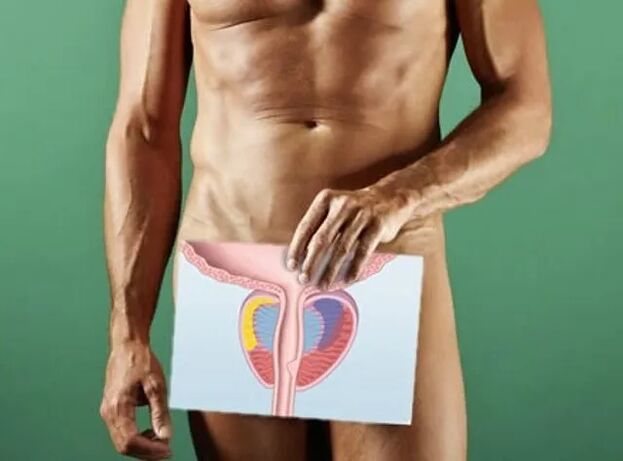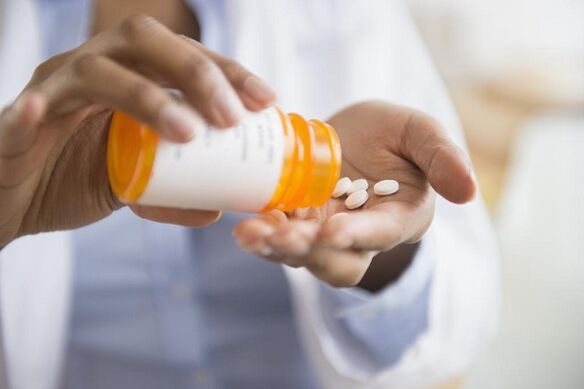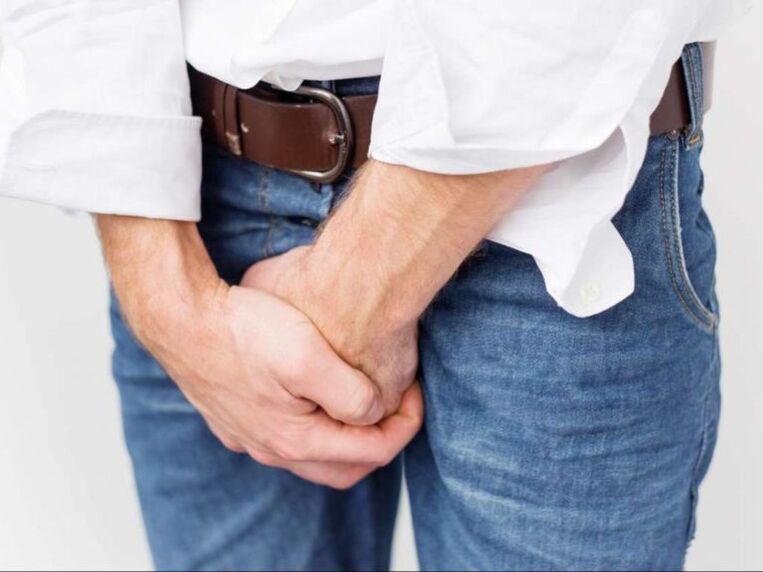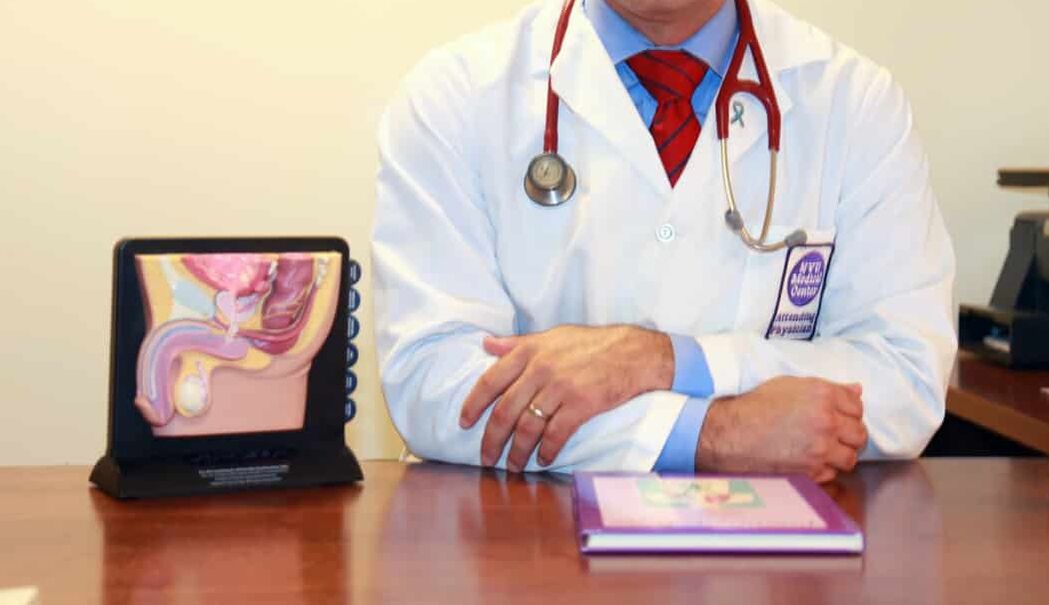Prostatitis is a common urological disease characterized by the presence of inflammatory changes in the prostate gland as a result of the influence of damaging factors (infectious, occupational and others). The standard treatment regimen for prostatitis depends on the form, course and pathogen of the disease.
Prostatitis therapy depending on the type

The disease has a polyetiological nature, but the main factor of occurrence is infectious. Therefore, the task of urology is the search for rational methods of etiotropic therapy and the fight against infection.
Treatment for bacterial prostatitis includes antibiotic therapy. The drug is prescribed after laboratory diagnosis to determine the pathogen and sensitivity to antibiotics.
According to the results of statistical studies in the treatment of the disease, drugs from the group of fluoroquinolones, cephalosporins and tetracyclines have been found to be the most effective.
In the treatment of prostatitis caused by herpes, HPV or cytomegalovirus, antiviral drugs are used. Prostatitis of fungal etiology is treated with antifungal agents.
Since many factors affect the occurrence of prostatitis, therapy is usually complex and includes lifestyle adjustments in general, aimed at increasing immunity and improving blood circulation in the pelvic organs.
The list of events includes:
- dietary food (to prevent constipation);
- regular physical and sexual activity;
- vitamin therapy;
- proper sleep and wake patterns.
If prostatitis is caused by a violation of the blood supply to the pelvis, then regular physical activities, massage and physiotherapy exercises (squats, lunges, walking, running) are indicated to eliminate the overload. In the presence of sources of latent infection (caries, sinusitis, tonsils), it is necessary to remediate pathological foci.

Therapy regimens
The symptoms of chronic and acute forms of prostatitis are similar, but the drug exposure schemes are different. This is due to the fact that in the acute form, the treatment is aimed at fighting the infection and stopping the unpleasant symptoms, and the chronic form of the disease needs physiotherapeutic methods of exposure.
List of drugs in the acute phase of prostatitis:
- NSAIDs - eliminate discomfort and inhibit the development of the inflammatory process in the gland.
- Antibiotics. Affect the causative agent of the disease. The most used are protected penicillins, macrolides, cephalosporins, fluoroquinolones.
- Antispasmodics. They are used to eliminate pain in the gland, improve the flow of secretions, relax the vascular walls and improve microcirculation.
- Alpha blockers. Improve flow during acute urinary retention by relaxing the smooth muscles of the urethra and bladder neck. Ease body inflammation and reduce swelling.
- Phytotherapeutic agents. They are an auxiliary healing agent of natural origin. Affect the prostate gland gently, reducing the swelling of the organ.
Important! In the acute phase of prostatitis, physiotherapeutic measures are contraindicated.
Physiotherapy will help spread the infection and worsen the inflammation.

The chronic form of prostatitis, on the contrary, is mainly treated with physiotherapeutic methods:
- Laser therapy.
- Phonophoresis (a combination of ultrasound and a drug).
- Electrophoresis.
- Exposure to microwaves.
Apply one or several treatment methods at the same time. Surgical intervention (endoscopic method) is used only in the chronic form, complicated by the sclerotic process and congestion in the gland. The operation can significantly improve the patient's quality of life, restore lost functions.
Principles of acute prostatitis treatment

Urogenital infections are almost always the cause of acute prostatitis. It can be both non-specific infection (caused by conditionally pathogenic microorganisms) and venereal infection (gardnerellosis, chlamydia, gonorrhea, trichomoniasis, etc. ).
In the first case, the pathogenic microflora penetrates the lymphogenous or hematogenous way from the intestines or urinary tract to the prostate and causes inflammation there.
In the second case, the pathogen is transmitted by an infected sexual partner.
The method of treatment of acute prostatitis depends on the type of pathogen and always includes antibiotics. After a thorough examination, the doctor identifies the pathogen and prescribes the appropriate medicine.
In case of infection with protozoa (trichomoniasis), a drug from the group of nitroimidazoles is usually prescribed. Treatment of intracellular chlamydial infection is with macrolide antibiotics.
Alternative agents are several other macrolides, fluoroquinolones, and a tetracycline antibiotic.
Treatment of gonorrheal lesions includes penicillin and cephalosporin antibiotics and vaccine therapy. Inflammation of the gland caused by gardnerella requires the use of antibiotics (macrolides, lincosamides, as well as a drug from the group of nitroimidazoles and its analogues are prescribed).
In the treatment of acute prostatitis caused by non-specific microbial flora, a standard drug regimen is used, which also includes antibiotics.
The standard treatment regimen for prostatitis includes the following measures:
- Bed rest in the acute form, massage and exercise therapy in the chronic phase of the disease.
- Diet food.
- Antibiotics to suppress the microbial flora that caused inflammation in the prostate gland.
- NSAIDs are used as a symptomatic medicine for pain and to fight inflammation.
- bioregulatory peptides. These are products from the prostate gland of cattle. Stimulate regeneration processes in the gland.
- Antispasmodics.
- Muscle relaxants are used to relax the bladder, urethra, and perineal muscles.
- Means that improve blood circulation and the rheological properties of blood that eliminate congestion (for example, a drug that improves microcirculation in the gland by blocking receptors located on the walls of blood vessels).
- Hormonal agents.

Depending on the course and characteristics of prostatitis, other measures can be added to the scheme (ultrasound, autohemotransfusion, rectal administration of drugs).
To quickly stop the symptoms of prostatitis, intravenous infusions are used.
Such treatment is carried out in a hospital setting. To stimulate the immune system, anabolic tissue preparations are prescribed.
Treatment of acute bacterial prostatitis

Antibacterial treatment is indicated in the acute form of the disease caused by infection. But in some cases, it is also prescribed for chronic prostatitis of bacterial etiology - as an additional measure of influence on possible latent infections. Preference is given to means with a broad antibacterial spectrum.
The course of treatment is from 2 weeks to a month. If there is a good dynamics of improvement of the condition, then the treatment can be extended up to 2 months.
The most commonly used groups of antibiotics for the treatment of bacterial prostatitis are:
- protected penicillins. Medicines are prescribed orally 1 g 2 times a day. It is important to take the medicine regularly at the same time with an interval of 12 hours. The course of exposure to the drug varies from a week to 10 days. Penicillins are usually used until the results of laboratory tests are obtained.
- Second generation fluoroquinolones, 200 mg 2 times a day for 1-2 weeks.
- Fluoroquinolones 3 generations 0, 5 g 1 time / day for 5 days.
- Third generation cephalosporins. Assign the drug to / m or / to 1 g 2 times or 2 g 1 time a day for 7-10 days.
- 4th generation cephalosporins 2 g per day intravenously or intramuscularly for 5-7 days.
- Aminoglycosides. Enter 1, 0 g / m 1 time / day for 5-7 days.
- Macrolides. Non-toxic, do not negatively affect the intestinal microflora. Assign orally 500 mg 1-2 times a day. The drug should be taken for at least 5-14 days.
When taking antibiotics for prostatitis, patients are not recommended to independently reduce the dose and duration of treatment. The full course is at least two weeks.
Allergic patients should inform the doctor about existing intolerance to specific drugs before starting treatment. It is possible that in case of violation of the functions of the liver or kidneys, the specialist will have to make adjustments to the treatment regimen or the dose of drugs, so it is important to warn him in advance.
Scheme of treatment of acute viral prostatitis

Virological diagnostic methods are not included in the examination protocol, so usually the diagnosis of "viral prostatitis" is rarely made by urologists. Herpetic infection and HPV are sexually transmitted.
The genital herpes virus enters a man's body and multiplies, after which it reaches the lymph nodes, from where it spreads through the internal organs through the hematogenous and lymphogenous route.
After exposure to the drug, the virus persists in the spinal or cranial ganglia and periodically replicates. Usually, an exacerbation occurs after hypothermia or reduced immunity.
The culprits of this type of prostatitis are herpes virus, cytomegalovirus, HPV and influenza. The causative agent is able to penetrate not only the prostate, but also other organs located nearby, for example, the bladder, urethra, testicles, rectum, causing severe damage to them when immunity decreases.
The causative agent of viral prostatitis can be identified using laboratory tests. In men, genital herpes has the appearance of vesicles and localized sores on the groin, scrotum, perineum or urethra. Basically, the disease continues with severe itching and burning, but there is also an asymptomatic course.
Treatment for viral inflammation of the prostate includes:
- Taking antiviral drugs. They are effective in treating herpes and HPV. The mechanism of their action is based on suppressing the emergence of new generations of the virus. Specific treatment is carried out for 5 days with the maximum therapeutic dose on the first day.
- Reception of immunomodulators.
- To normalize urination, alpha-blockers are prescribed, which relieve smooth muscle tension and facilitate urine output.
With the defeat of HPV or warts, sometimes it becomes necessary to remove the growths using electrocoagulation, laser or liquid nitrogen. The procedure is performed in a hospital.
Scheme of treatment of acute fungal prostatitis
Prolonged use of antibiotics leads to the emergence of new types of microorganisms that are resistant to many antibacterial agents. The increase in the number of patients with fungal prostatitis is caused by the uncontrolled use of antibiotics and the gradual dependence on them.
With a decrease in immunity, fungi of the genus Candida begin to multiply actively in the body, causing candidiasis.

In the treatment of candidal prostatitis apply:
- Antimycotics. Drugs are sometimes combined in different proportions.
- Probiotics containing bifido- and lactobacilli. They inhibit the growth of pathogenic flora.
- Immunomodulatory agents that increase the body's defenses.
Important!The diet of patients with fungal infection of the prostate should include foods with probiotics.
These are kefir, yogurt, acidophilic milk. In addition, it is necessary to limit the use of sweets, pastries, fresh milk, fruits and juices.
Conclusion
It should be remembered that only a specialist urologist can choose a course of drugs for prostatitis. Self-medication will slow down the healing process, and in the worst case, it can harm the body, cause severe allergic reactions and help the body adapt to some antibiotics, as a result of which these drugs will no longer havetherapeutic effect.















